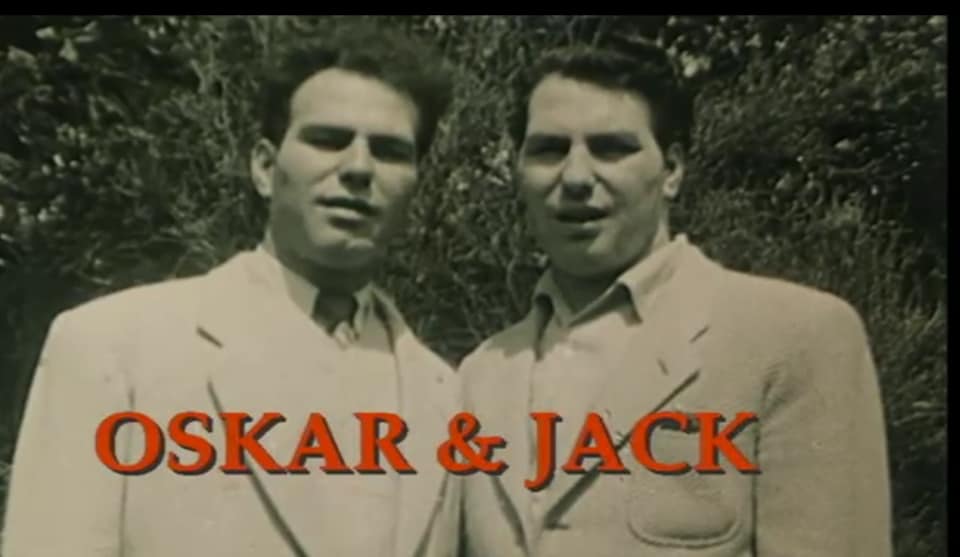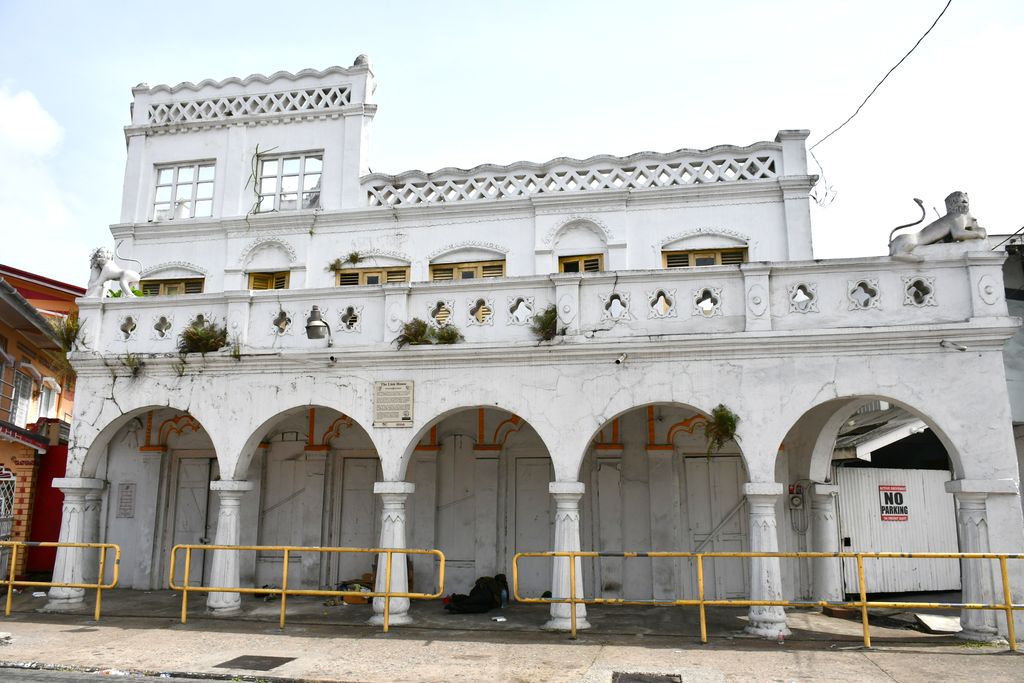|
Chapter from our local history few know about.
by Historian Angelo Bissessarsingh. The rocky limestone islet perhaps was used as a temporary prison depot around 1854 when Superintendent of Prisons Daniel Hart lodged some convicts who were labouring on cutting a channel for small boats through Pointe Gourde. This waterway was named Hart’s Cut after its innovator sang his own praises and wrote: “This is a Canal cut across the Isthmus of Chaguaramas 2,165 feet in length, 15 feet in width, and four feet deep from the banks. The cutting was suggested by Mr Daniel Hart, Superintendent of Prisons, approved of by the Governor, Sir Charles Elliot, KC, and ordered to be carried out under Mr Hart’s superintendence by means of convict labour.’ The work was completed on May 29, 1856…….. To the inhabitants of Chaguaramas, Monos, and Chacachacare, the cut is one of the greatest of boons that could have been conferred, obviating as it does, the necessity (as previously) of going round the dangerous passage by Point Gourde, a place where many people have lost their lives.” In 1966, the canal which had served so many for so long was filled in and is now the carpark for prison officers on the island. In 1866 Carrera became a short-lived quarantine depot for Indian indentured labour before the facility moved to Nelson Island. Around 1875 convicts were set to work “bussin stone” to provide hard punishment and supply road metal to the Public Works Department. This was done on a starvation diet of a few biscuits and tea twice daily and a midday pint of soup. It was the harshest form of incarceration for in those days: prisoners did not enjoy holidays at taxpayers’ expense as they now do, but were pressed into chain gangs for the maintenance of public infrastructure (cemeteries, road verges, etc) or else quarried on Carrera and its neighbour, Kronstadt Island. In 1876 construction of a huge stone-walled prison complex was initiated and completed by 1880. Prisoners from a defunct convict timber depot in Longdenville and later, one in the Irois forest, were crowded into tiny cells. For many years the Superintendent of Prisons was Capt Percy Fraser, who implemented many changes and saw incarceration as both a stern process and one intended to reform and modify the character of the offender. During World War I (1914-18), Carrera prisoners were used to erect a gun on Gaspar Grande Island, having to cut the roadway to the top of a steep hill and then dragging the massive weapon by hand all the way under the personal supervision of Capt Fraser and the governor of the colony himself, Sir John Chancellor. Towards the end of Percy Fraser’s administration in 1931 there was a prison riot, which saw the warders being held hostage until the situation was defused by the arrival of Fraser himself. A Commission of Enquiry was appointed to look into the colony’s penal system and massive revisions implemented, including an expansion of the facilities on the island. Adult literacy classes, movie nights and trade-school were some of the improvements but may have failed to make an impact on all, since one of the most infamous products of the system in this period was Boysie Singh, the pirate, gangster and murderer who paid for his crimes at the end of a hangman’s rope. For all the upgrades to the system it must not be imagined that Carrera was paradise. There was once an epidemic of blindness among the Indian prisoners. Many were there for the crime of wife-murder, which was prevalent at the period. Apparently, a rumour spread that blind prisoners would be released and repatriated to India, where there were native doctors who could restore their sight. The blindness was achieved by catching crabs on the rocky shoreline and squeezing the toxic bile from their innards into the eyes, which caused rapid inflammation and loss of sight. On another occasion, a prisoner convicted of a sexual offence contrived to silently amputate his own testicles, which were later kept in alcohol in the prison infirmary as a curiosity. At times Carrera could indeed be akin to the other famous island-prison, Alcatraz, which seems to whisper Dante’s words: “Abandon hope, all ye who enter here.” Yet among this there are positive stories, one of which is quite personal to me. After leaving his father’s cocoa estate in Siparia to see service during World War II, 21-year-old Eulick Bissessarsingh became a prison officer in His Majesty’s service, being posted to facilities in the Bahamas and St Vincent before being stationed at Carrera Island, where he remained until 1954. Of his time on Trinidad’s Devil Island, Eulick always remarked that aside from the odd disturbance or two, jailbirds and warders shared a kinship, since the long furloughs of duty (sometimes lasting weeks) made them all prisoners. This is not to say that the jail was a social club. Misdemeanours amongst the inmates were punished with solitary confinement in a cell reeking with sewage, floggings with the cat-o’-nine tails (a dreadful whip) and a single meal of bread and water daily. It is perhaps no surprise that on several occasions, prisoners dared swim the shark-infested channel separating the island from Chaguaramas in a desperate bid for freedom. Amidst this terror was another young man, Rupert “Archie” Archibald, who, like Eulick, hailed from Siparia—his crime, murder. Archie at age 14 lived under the shadow of abuse and being unable to see his stepfather brutalise his mother any longer, took up an axe and cleft the man’s skull. Eulick and Archie fast became friends behind the ominous walls of Carrera. An accomplished artist, the prison warder passed on his skills to the inmate and also taught him to read and write. Eulick also interceded on Archie’s behalf in writing several times, understanding that Archie’s offence was a crime of necessity. Eulick left the prison service in the 1950s and a couple of years after, Archie was granted his freedom and the two renewed their old friendship back in their hometown of Siparia. The ex-convict took on a new mantle as the Midnight Robber every Carnival in a most impressive form, his towering stature and expressive lyrics making him one of the past-masters of ole mas. His elaborate costume was designed and constructed by Eulick Many years after his friend died in 1986, I remember Archie—then a very old man and nearly blind—tottering up the steep poui-lined driveway leading to our home. He would sit and regale us for hours with stories of Carrera and his life before, as well as the times he and Eulick, my grandfather, shared as friends. Archie gave me a bay-leaf tree which he asked me to plant in Eulick’s memory, which I did, in 1993, and it still thrives. Archie is dead now, ending a great friendship of seemingly impossible origins that began and lasted on Carrera Island. It is my fervent hope as a historian that Carrera Island will be preserved as a relic of our past and can serve as a beacon for tourism which has already proven to be a practical use for old island prisons at Alcatraz and Devil’s Island. Jack Yufe, founder of Yufe's haberdashery store in Trinidad and Tobago, had an unusual life that attracted international attention.
Yufe had an identical twin brother Oskar Stohr, and the two had radically different lives that may well be suited to a movie. Born in Trinidad in January 1933, Yufe and Stohr were separated at six months old, when their parents divorced. Yufe stayed in Trinidad with their Jewish father, Joseph, who was Jewish, while Stohr moved to Germany with their Catholic mother, Elizabeth, and grew up as the Nazis rose to power. Yufe was raised Jewish, and contributed to the landscape of T&T's textile industry. He eventually joined the Israeli Navy, worked on a kibbutz, and moved with his father to San Diego, USA, to run a small store. Stohr was raised Catholic, kept his Jewish ancestry a secret. Like his fellow students, he greeted the school principal with "Heil, Hitler," and was warned by his grandmother to never let on that his father was Jewish. As an act of survival, Stohr joined the Hitler Youth movement, an organisation for young people in the Nazi Party According to the Los Angeles Times, Yufe reuinted with his long-lost twin in 1954 when he traveled to Germany to find Stohr. The two found they had very similar habits, mannerisms, hairstyles and style of dress. But they spoke no common language and were unable to communicate well. Yufe found out enough to tell the LA Times that Stohr avoided letting anti-Semitic family members know his brother was Jewish and had been in Israel. He said that upon arriving in Germany, Storh told him to remove his name tags from his luggage and hide his Jewish identity for the duration of his stay. Yufe lasted a week in Germany before packing up and going home. The two did not meet again until 1979, when Yufe learned about a University of Minnesota study about twins, and wanted to participate. In addition, Yufe and Stohr were featured in other films about twins, according to the Times. Of all the twins who participated in the Minnesota study, Yufe and Stohr had the most contrasting backgrounds. “Jack and his brother clearly have the greatest differences in background I’ve ever seen among identical twins reared apart,” Thomas J. Bouchard Jr., the University of Minnesota psychologist who headed the study, told The Times in 1979. After some time, their families noticed, they began to form a bond that was close to something brotherly. At least, they said, the hate seemed to subside. However, their upbringings never stopped being a problem. Over time they just learned to avoid topics like religion and the war. Cal State Fullerton psychology professor Nancy Segal wrote a book on the brothers aptly titled “Indivisible by Two: Lives of Extraordinary Twins.” Segal told the Times that the twins had an “extraordinary love-hate relationship”. Eventually, Yufe said he learned not to blame his brother for the circumstances that landed them on opposite sides of a deadly war. Yufe reportedly told Segal that he did not blame his brother for participating in the Hitler Youth. "Children have no say in what they are taught", he said. "If we had been switched, I would have taken Oskar's place for sure." Stohr, who had worked in coal mines, died of lung cancer in 1997 at age 64. Yufe died of stomach cancer in San Diego in 2015 at age 82. PHOTO: Jack Yufe, left, with his identical brother Oskar. Robert Lachman/Los Angeles Times/AP Sources: www.haaretz.com www.losangelestimes.com www.independent.co.uk http://allthatsinteresting.com ......................... The first group of Jews in Trinidad arrived in 1783 with the Cedula of Population, when Trinidad – an underpopulated Spanish colony – opened its borders to Europeans. The second group came in when slavery was abolished in 1838. The third wave of Jewish immigration occurred during and after World War II when European Jews were fleeing the the Nazis. Many of them held German and Austrian passports. Reminder that the one and only showing of this film in Ottawa is April 25th at the Imagine Cinema on St. Laurent boulevard. See home page for trailer and details.
Calypso Rose took the 2019 Coachella stage on Friday, with an outstanding and entertaining performance in true Caribbean style. The veteran calypsonian, who is making waves internationally took the 2019 Coachella stage on Friday, with an outstanding and entertaining performance in true Caribbean style. “Now I am the queen of Coachella and the Queen is from Trinidad and Tobago,” Calypso Rose declared during one of her performances. The 78-year-old Trinbagonian made history as the music festival’s oldest performer and has been featured in several international news publications for her Coachella performances. She wowed the crowd yet again on Friday as she performed hit after hit and even brought Nailah Blackman and Machel Montano on the stage to perform with her. In an Instagram post Nailah said it was an honor to perform with the veteran singer. “What a great honor it is to be performing with @calypsorosediva at @coachella. What a great inspiration she has been to me on my musical journey,” she said. Calypso Rose turns 79 on April 27. She is scheduled to go on tour from next month in Germany, Switzerland and London. Source: The Loop, April 22nd, 2019 Her latest release:  Boysie Singh was a notorious Trinidadian killer who was eventually hanged for murder in the mid-1950s. Born at 17 Louis Street, Woodbrook, on April 5, 1908, he grew up to be a gambler, thief, arsonist, pirate, and mass murderer. Singh’s father Bhagrang Singh was himself a fugitive from justice, who reportedly fled India to Trinidad. Singh started doing petty crime, even spending time at Carrera Island Prison in the 1940s. Following prison, he ran gambling clubs and brothels, moved on to the protections racket, and was known to set fire to cars or buildings when "clients" would not pay up. Later, he smuggled goods from Cedros to Caracas, then resorted to piracy. From 1947 to 1956, Singh and his henchmen terrorised local fishermen and Venezuelan smugglers. They would kill a crew, steal their goods and engines, and sink the boat. Singh broadened his criminal reach to include human trafficking, smuggling illegal immigrants some of whom he would rob or kill. Along the way, it is reported, he murdered hundreds of people. Legend has it that some victims were made to "walk the plank", in the tradition of old-time Caribbean pirates, and plunge to their death at sea. Twice, Singh was charged by the police. In one case, he got off due to lack of evidence. In the other, he was convicted but won on appeal and was released. Eventually, Singh's luck ran out when he was convicted for the murder of a dancer. All appeals failed, and he was sentenced to death. Boysie Singh was hanged at the Royal Gaol in Port-of-Spain on August 20, 1957. Source: Breaking News T&T, Feb 2019  Thousands of Christians will be flocking to churches this weekend for the annual Palm Sunday observances. Palm Sunday or Passion Sunday is observed on the sixth Sunday of Lent, the Sunday before Easter and commemorates Jesus’ triumphal entry into Jerusalem, an event mentioned in each of the four Gospels. The Bible tells us people cut branches from palm trees, laid them across Jesus’ path and waved them in the air. They greeted Jesus not as the spiritual Messiah who would take away the sins of the world, but as a potential political leader who would overthrow the Romans. They shouted “Hosanna (meaning “save now”), blessed is he who comes in the name of the Lord, even the King of Israel!” As has become customary, Palm Sunday observances include the waving of palm branches in procession, the blessing of the palms and the making of small crosses with the palms. The celebration of Jesus’ triumphal entry into Jerusalem marks the start of Holy Week, which focuses on the final days of Jesus Christ’s life. In Trinidad, the Attalea Maripa or “cocorite” Palm is harvested for distribution to the faithful on Palm Sunday. Cecil Toyer, a member of the St John’s Evangelists Church who customarily leads the group in cutting the leaves, explained: “You cannot get palm from the other palm trees because of the main fact that you have to cut the soft branch of the palm tree. The soft part of the palm tree is located in the heart of the palm tree, which is in the centre. Cocorite is the only palm tree you could cut over and over and the tree will not die.” Toyer explained that the trees are indigenous to several tropical South American countries as well as T&T. They typically grow in lowland forests and undisturbed areas, on soils that are not usually flooded. As the reporter assigned to the story I accompanied the team. The palms we went to reap grew on the side of a cliff on the Northern Range in the vicinity of the North Post Road, Diego Martin. This meant we had to venture over 160 feet down the undulating and dangerous terrain to reap the leaves. After they were cut, the palms were manually dragged back up the steep incline to the North Post Road where they were stripped. But before the stripping is done, they first press the young palms to the ground and bent it back and forth to “crack” it. This unseals the shoot so the individual palm leaves could be extracted for use. When the palms are distributed in churches from this afternoon, many faithful will fold them into the shape of a cross, which are used in the procession at the church on this Palm Sunday in a re-enactment of Christ’s arrival into Jerusalem and then taken home where they are displayed in cars and homes. Some of the blessed palms which have been cut are kept. These are burnt the following year to be used as ashes for the Ash Wednesday observance. Source: The Guardian, April 12, 2019. WE DESERVE THREE-DIMENSIONAL CHARACTERS WHO LOOK LIKE US, IN EVERY GENRE.by Frances-Anne SolomonWriter, producer, director, curator and distributor in film, television and radio. Producer of the movie Hero.  He had just come off one of the most successful weekends at the box office — ever. Director Jordan Peele was speaking at the Hollywood Improv Theatre after his horror flick scared up US$88 million in its opening. It has since raked in more than US$200 million. With the success of "Get Out" (US$174M) and now "Us," Peele can literally write his ticket with the studios when it comes to what he wants in a movie, and he said as much to an audience of aspiring actors and fans: "I get to cast black people in my movies. I feel fortunate to be in this position where I can say to Universal, 'I want to make a $20-million horror movie with a black family.' And they say yes." Now that's power. But it wasn't this bit of pride and, yes, boastfulness that got the Twittersphere and others in a tizzy. It was his next statement that got the debate rolling: "I don't see myself casting a white dude as the lead in my movie. Not that I don't like white dudes," he said. "But I've seen that movie." Cue the outrage, the false equivalencies — "What if a white director had said that about casting black actors?" — and the debate about why a black director (or any creative of colour) should choose to tell stories that reflect their own perspective and experiences. Lost in all the unfounded indignation was the rest of his statement: "It really is one of the best, greatest pieces of this story, is feeling like we are in this time — a renaissance has happened and proved the myths about representation in the industry are false." Finally. And this is a "finally" that has been said before. Consider last year's smash "Black Panther" ($1.34B) and a long list of black films dating back to the early 1990s: "New Jack City" ($100M), "Malcolm X" ($102M), "The Book of Eli" ($105M), "The Equalizer" ($108M), "Barbershop" ($115M), "Boyz In Da Hood" ($120M), "The Butler" ($130M), "Boomerang" ($149M), "Waiting To Exhale" ($134M), "Ride Along" ($149M) and "Straight Outta Compton" ($172M). Let's not forget the Tyler Perry/Madea franchise. Black films have proven Peele's point over and over again. Yet, telling stories through the lens of a community that is not "mainstream" (read: white) continues to be a hard sell for financial backing. White narratives dominate mediaI've fought the good fight for many years to tell stories that reflect the fabric of our multicultural reality. As a drama producer at BBC Television in England, where I began my career, I fought to represent the authentic voices of Britain's diverse communities on screen. My ambition was met with resistance. I arrived during the mid-1980s, hired to work on one of the first black TV magazine programs, "Ebony." It was a time of marked political and racial division. London burned — as did Handsworth, Birmingham and Manchester — amid black communities protesting decades of racial oppression. The first news story that I covered was in the aftermath of what was called the "Black Riots" -- a policeman had been murdered. In retaliation, hundreds of black youth were arrested, tried without evidence and deprived of their rights. I remember black people being described as "black monkeys" in the media and people making monkey noises in reference to them. I covered not just the trials but also the community's response. After we cut our program together, I was shocked and disappointed when the program was pulled minutes before it was to be broadcast. I recall being told that it was because of a "lack of balance." Thirty years later, the real reasons for the frustrations of Britain's black communities are now coming to light in what has become known as the Windrush Scandal. This political scandal rocked Britain last year when British-born subjects (from the Commonwealth) who arrived in the U.K. before 1973 were wrongly detained, denied legal rights and threatened with deportation. Many were from Caribbean countries and the name "Windrush" was given after the 'Empire Windrush' — a ship that brought one of the first groups of West Indian migrants to the U.K. in 1948. Our voices are finally being heard. In 2000, I returned to Canada, where I went to university. As a producer of colour, working in media here has been heartbreaking. Year after year, the same folks receive funding for the same recycled stories. White-centred or European narratives overshadow the authentic stories of people of colour — telling our struggles, but forgetting to speak of our joys and triumphs. We will no longer seek approval or permissionThe reality is that the Canadian immigrant story is changing. Beyond the refugee camps we see on the news; scenes of war and poverty; two-dimensional images of victims and criminals; and the cookie-cutter, paint-by-numbers approaches of Hollywood, the lives of people of colour are so much more interesting, more nuanced and compelling. But we have yet to see this extraordinary transformation documented on television and film screens. Our authentic stories matter. It is our birthright, as important as breathing and eating, to express the truths of our experiences and pass these on from generation to generation so that those coming after learn from and about us, and survive, thrive and grow. We deserve three-dimensional characters who look like us, in every genre; stories in which we are the heroes, the protagonists of our own destinies. Not all of these will be multi-million-dollar box office films — they shouldn't have to be. It is important that the few of us who do arrive in positions of power or decision-making feel comfortable and confident telling stories the way we want to. Arriving doesn't mean that we now tell the mainstream stories that solely focus on white characters and their experiences or ones developed out of the minds of powerful white male producers. In an interview with The Guardian, acclaimed author Toni Morrison explains unapologetically, "I'm writing for black people in the same way that Tolstoy was not writing for me, a 14-year-old coloured girl from Lorain, Ohio. I don't have to apologize or consider myself limited because I don't [write about white people] .... The point is not having the white critic sit on your shoulder and approve it." We will no longer seek approval or permission to tell our stories. As Jordan Peele pointed out, we are in a renaissance, and myths have been shattered. And at the end of the day, let's be real — the colour that truly speaks volumes is the colour of money. Source: Huffington Post Canadda, April 16, 2019. Vagrants have moved into Lion House, the childhood home of late Nobel Laureate VS Naipaul, which is in an advanced state of dilapidation and could collapse at any time.
The once majestic white structure made famous in Naipaul’s book, A House for Mr Biswas, in which he transforms the representations of lions carved on the front of the building into the Hindu monkey-god Hanuman. However, although it has undergone extensive restoration works in the past, Lion House was left abandoned following the death of attorney Surendranath Capildeo, grandson of Pundit Capildeo, the indentured labourer who built the house. Regarded as one of the architectural treasures, the building is listed by the National Trust and is considered to be of major historical significance in central Trinidad. Chaguanas Mayor Gopaul Boodhan and Tabaquite MP Suruj Rambachan, who visited the building yesterday, came upon Suruj Samuel, a homeless man who sleeps in front of the dilapidated doors of the structure. Samuel is one of several vagrants now occupying the structure. He stores his few possessions in cardboard boxes and sleeps under a rotted wooden beam that could collapse at any time. Rambachan, a resident of Chaguanas, said he was very disheartened at the state of Lion House. He estimates that it will collapse within two years unless urgent repairs are done. He peered through a groove in the wooden front doors held together by a rusty padlock at the interior of the building where the floors have caved in and there are signs of major water damage. “I am very, very disturbed, disheartened and depressed at what I am seeing happening to Lion House here in Chaguanas,” he said. “This is one of the most tragic things I am seeing in my country at this point in time. The deterioration of this building says something about our value for our history and our ancestry.” Rambachan said he hopes the relevant authorities will see it fit to conduct immediate repairs. “If you cannot appreciate where you came from, you would never be able to build the kind of future that would be one our children can be proud of,” he said. He recommended that the building be acquired by Government and “restored with the same enthusiasm that was placed in the restoration of Stollmeyers Castle.” Boodhan said since the property is privately owned there is very little the Chaguanas Borough Corporation apart from getting the vagrants to relocate. Lion House was last restored in the early 1990s by Surendranath Capildeo who retained architect Colin Laird to advise on and supervise the project, awarded to EWAC & Co. Ltd with Glen Espinet in charge. Work was halted for a view years during which the building was vandalised, so the project had to start all over again. The restoration was eventually completed in 2001 with all the costs borne by Capildeo. In 2013, then tourism minister Stephen Cadiz announced that a master plan was being developed to transform Brechin Castle, Couva, into an East Indian heritage site. That plan included restoration of the Lion House. He said a budget had already been formulated for the restoration work and discussions would be held with Capildeo. However, since Capildeo’s death in 2016, Lion House has been left abandoned. The Lion House has been many things to many people in its early history. It was the meeting place for many travellers from all over Trinidad who were passing through Chaguanas. It was also an early community centre for the residents of Chaguanas and surrounding areas. It was the natural home for Hindu Pilgrims wherever they may have resided in Trinidad. At some point in their lives, they gathered for comfort under the awnings of the Lion House on the Main Road, Chaguanas. Ganja was sold at the Lion House and it was consumed there, by the public without any discomfort to anyone. Source: The Guardian, March 2019 |
T&T news blogThe intent of this blog is to bring some news from home and other fun items. If you enjoy what you read, please leave us a comment.. Archives
March 2025
Categories
All
|






 RSS Feed
RSS Feed